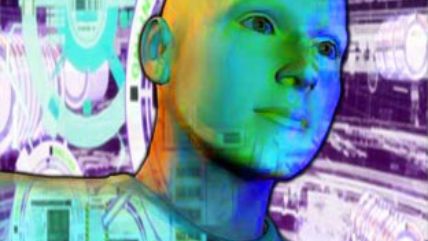Creativity Triumphs Over the Law, Again and Again
When humans focus their innovative talents on the task of defeating control freaks' pronouncements, freedom wins.

Human creativity is a boundless resource. It produces great works of art and philosophies that explore the meaning of life. Creativity brings us technological innovation and exploration of the unknown. And humanity's innate ability to find new approaches and examine problems from different perspectives also brings us ever-evolving ways for defeating the would-be tyrants and petty nannies in our midst.
Without creativity, not only would we still be huddled in cold, dark caves, we'd also be living unquestioningly under the thumb of the latest in a long line of control-freak tribal chieftains.
Take drones, for example. Sure, hobbyists have fun slapping cameras on them and spying on their sunbathing neighbors. But the remote-controlled flying devices have serious uses, too.
"The Yuma Sector Border Patrol has recently encountered small remote controlled aircraft, commonly referred to as drones, being used to smuggle drugs into the United States," Customs and Border Protection announced in April. "The drones vary in size, but are commonly between 2 to 4 feet wide."
The use of drones to carry contraband was almost old news by then. In January 2015, a drone carrying six pounds of crystal meth across the border from Mexico crashed in San Ysidro, California. Overloaded, the robotic smuggler couldn't reach its destination. On a similar note, Brayan Valle and Jonathan Elias were caught near Calexico, California, while loading the nearly 30 pounds of heroin they'd already flown across the border with a remote-controlled drone.
But nobody knows how many loads successfully cross over the line between Mexico and the United States, unobserved and unintercepted.
When you think about it, drones make perfect sense for smuggling. The devices are difficult to detect, fly over barriers, and are relatively easy to operate. Even if intercepted, the actual smugglers have a better than usual chance of escaping themselves while authorities gain only one load of goods and an inexpensive and easily replaced widget.
Drones are such natural and affordable smuggling tools that they've become a favorite means for prison inmates to receive deliveries of banned drugs, cell, phones, and smokes—while those of us in the outside world still await the introduction of such convenience.
Innovation also drives letter-of-the-law compliance with many gun restrictions, as well as workarounds that render such laws irrelevant.
When New York lawmakers crafted restrictions and registration requirements for so-called "assault weapons," they had to write detailed descriptions of what they were banning, since the targeted category of firearms has no firm definition. Most New Yorkers just ignored the new registration requirement. But others looked at the list of features that differentiated restricted "assault weapons" from untargeted everything else, and tweaked their property to eliminate a few cosmetic details that brought them under the law. "The modified gun still fires at the same rate and with the same power," noted The Guardian. "The shooter just holds it slightly differently. These modified weapons do not have to be registered with the state."
Famously, tinkerers led by Cody Wilson harnessed technology to make it easier for people to make their own guns, to nudge personal arms even further beyond the reach of government officials. Wilson first created a working pistol with a 3D printer and released the plans to the public. The plans continued to spread and evolve even after the U.S. government ordered Wilson to remove them from the internet. "Limiting access may be impossible," the Department of Homeland Security conceded in reference to the wonderfully subversive technology. Wilson has since moved on to CNC mills that turn unregulated partially finished AR-15 receivers into fully functioning rifle guts.
California officials responded with an unenforceable new requirement that people building their own guns out of sight of the authorities, using technology intended to kneecap the law, submit to background checks and apply for serial numbers. The DHS seems to be onto something about the impossibility of limiting access.
But even in a tech-driven age, human creativity can sometimes be very old school, in keeping with the age-old resistance to being bossed around. That's certainly the case with the black market in contraband condiments that the Canadian province of Quebec created with a legally enforced monopoly on the export of maple syrup. In Quebec, people commercially manufacturing the sweet stuff are legally required to sell most of it to the Federation of Quebec Maple Syrup Producers, subject to centrally set prices and quotas.
Many producers are unwilling to tolerate the monopoly. "In scenes that could come from a Hollywood drugs movie, they load barrels of syrup on to a truck as quickly as possible, and then race it over the border line under the cover of darkness," the BBC reports.
The rebels are taking a risk, since the cartel has been known to seize the entire inventory of producers who defy its will. The monopoly is open about its authoritarian ways, too, denouncing "certain free market advocates, libertarians, and other free rider types" in sniffy pronouncements.
But the rebels haven't backed down—even taking seized syrup back in at least one high-profile, multi-million dollar caper. And now "the cartel that produces 72 percent of the world's maple syrup is starting to crack," according to Bloomberg, under pressures from the black market resistance within and competitive pressures from producers in freer economies—primarily American states where producers make and sell as much as they wish and buyers happily snap up local production as well as smuggled product from north of the border.
It's an inspiring sight—scofflaw creativity bring yet one more set of control freaks to the brink of defeat.
Just imagine what the maple syrup rebels could accomplish with a fleet of syrup-hauling, 3D-printed drones.
Show Comments (20)